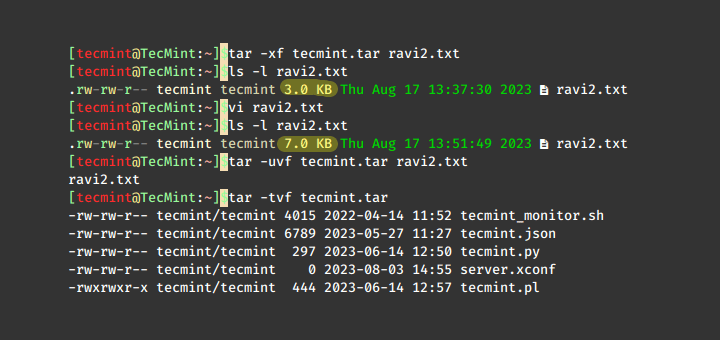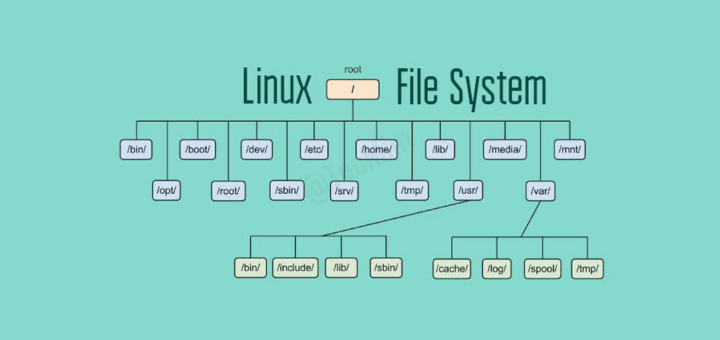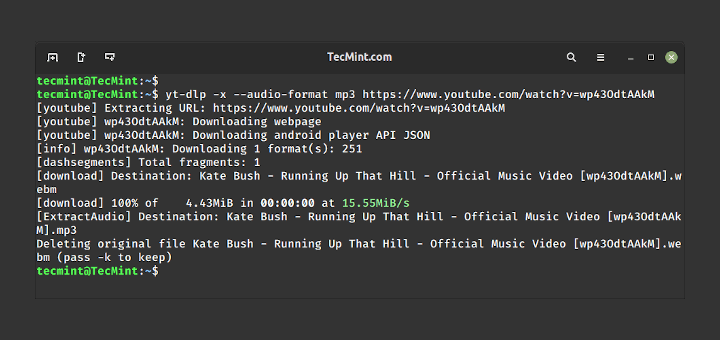In programming, a library is an assortment of pre-compiled pieces of code that can be reused in a program. Libraries simplify life for programmers, in that they provide reusable functions, routines, classes, data structures, and so on (written by another programmer), which they can use in their programs.
For instance, if you are building an application that needs to perform math operations, you don’t have to create a new math function for that, you can simply use existing functions in libraries for that programming language.
Examples of libraries in Linux include libc (the standard C library) or Glibc (GNU version of the standard C library), libcurl (multiprotocol file transfer library), libcrypt (library used for encryption, hashing, and encoding in C), and many more.
Linux supports two classes of libraries, namely:
- Static libraries – are bound to a program statically at compile time.
- Dynamic or shared libraries – are loaded when a program is launched and loaded into memory and binding occurs at run time.
Dynamic or shared libraries can further be categorized into:
- Dynamically linked libraries – here a program is linked with the shared library and the kernel loads the library (in case it’s not in memory) upon execution.
- Dynamically loaded libraries – the program takes full control by calling functions with the library.
Shared Library Naming Conventions
Shared libraries are named in two ways: the library name (a.k.a soname) and a “filename” (absolute path to file which stores library code).
For example, the soname for libc is libc.so.6: where lib is the prefix, c is a descriptive name, so means shared object, and 6 is the version. And its filename is: /lib64/libc.so.6. Note that the soname is actually a symbolic link to the filename.
Locating Shared Libraries in Linux
Shared libraries are loaded by ld.so (or ld.so.x) and ld-linux.so (or ld-linux.so.x) programs, where x is the version. In Linux, /lib/ld-linux.so.x searches and loads all shared libraries used by a program.
A program can call a library using its library name or filename, and a library path stores directories where libraries can be found in the filesystem. By default, libraries are located in /usr/local/lib, /usr/local/lib64, /usr/lib and /usr/lib64; system startup libraries are in /lib and /lib64. Programmers can, however, install libraries in custom locations.
The library path can be defined in /etc/ld.so.conf file which you can edit with a command-line editor.
# vi /etc/ld.so.conf
The line(s) in this file instruct the kernel to load file in /etc/ld.so.conf.d. This way, package maintainers or programmers can add their custom library directories to the search list.
If you look into the /etc/ld.so.conf.d directory, you’ll see .conf files for some common packages (kernel, mysql, and postgresql in this case):
# ls /etc/ld.so.conf.d kernel-2.6.32-358.18.1.el6.x86_64.conf kernel-2.6.32-696.1.1.el6.x86_64.conf mariadb-x86_64.conf kernel-2.6.32-642.6.2.el6.x86_64.conf kernel-2.6.32-696.6.3.el6.x86_64.conf postgresql-pgdg-libs.conf
If you take a look at the mariadb-x86_64.conf, you will see an absolute path to package libraries.
# cat mariadb-x86_64.conf /usr/lib64/mysql
The method above sets the library path permanently. To set it temporarily, use the LD_LIBRARY_PATH environment variable on the command line. If you want to keep the changes permanent, then add this line in the shell initialization file /etc/profile (global) or ~/.profile (user-specific).
# export LD_LIBRARY_PATH=/path/to/library/file
Managing Shared Libraries in Linux
Let us now look at how to deal with shared libraries. To get a list of all shared library dependencies for a binary file, you can use the ldd utility. The output of ldd is in the form:
library name => filename (some hexadecimal value) OR filename (some hexadecimal value) #this is shown when library name can’t be read
This command shows all shared library dependencies for the ls command.
# ldd /usr/bin/ls OR # ldd /bin/ls
Sample Output
linux-vdso.so.1 => (0x00007ffebf9c2000) libselinux.so.1 => /lib64/libselinux.so.1 (0x0000003b71e00000) librt.so.1 => /lib64/librt.so.1 (0x0000003b71600000) libcap.so.2 => /lib64/libcap.so.2 (0x0000003b76a00000) libacl.so.1 => /lib64/libacl.so.1 (0x0000003b75e00000) libc.so.6 => /lib64/libc.so.6 (0x0000003b70600000) libdl.so.2 => /lib64/libdl.so.2 (0x0000003b70a00000) /lib64/ld-linux-x86-64.so.2 (0x0000561abfc09000) libpthread.so.0 => /lib64/libpthread.so.0 (0x0000003b70e00000) libattr.so.1 => /lib64/libattr.so.1 (0x0000003b75600000)
Because shared libraries can exist in many different directories, searching through all of these directories when a program is launched would be greatly inefficient: which is one of the likely disadvantages of dynamic libraries. Therefore a mechanism of caching is employed, performed by the program ldconfig.
By default, ldconfig reads the content of /etc/ld.so.conf, creates the appropriate symbolic links in the dynamic link directories, and then writes a cache to /etc/ld.so.cache which is then easily used by other programs.
This is very important especially when you have just installed new shared libraries or created your own, or created new library directories. You need to run the ldconfig command to effect the changes.
# ldconfig OR # ldconfig -v #shows files and directories it works with
After creating your shared library, you need to install it. You can either move it into any of the standard directories mentioned above and run the ldconfig command.
Alternatively, run the following command to create symbolic links from the soname to the filename:
# ldconfig -n /path/to/your/shared/libraries
To get started with creating your own libraries, check out this guide from The Linux Documentation Project(TLDP).
That’s all for now! In this article, we gave you an introduction to libraries and explained shared libraries, and how to manage them in Linux. If you have any queries or additional ideas to share, use the comment form below.







Hi,
What does the “hexadecimal value” means?
e.g. linux-vdso.so.1 => (0x00007ffebf9c2000)
Hi,
Very nice blog post, congrats! :)
May I suggest you remove the “a” from the next sentence?
> performed by the program ldconfig.
@Cepxio,
Thanks, corrected the article…
Thanks it really helps me for LPIC !
@Mateuw
Thanks for the useful feedback.
Should I update cache after installing library with `
ldconfig -n /xx` command?If I run “ldconfig -p” in my new Centos 7 installation I see 269 entries, but /etc/ld.so.conf include ld.so.conf.d/*.conf which have only two files:
Where all that other shared libraries come from???
Thank you .
@NikiC
The other shared libraries are read from standard locations on the file system as explained in the article above.
Hi,
Thanks a lot for very nice material
Please change -V to -v in
# ldconfig -V #shows files and directories it works with
@Jalal
Thanks for the correction, the article has been updated.